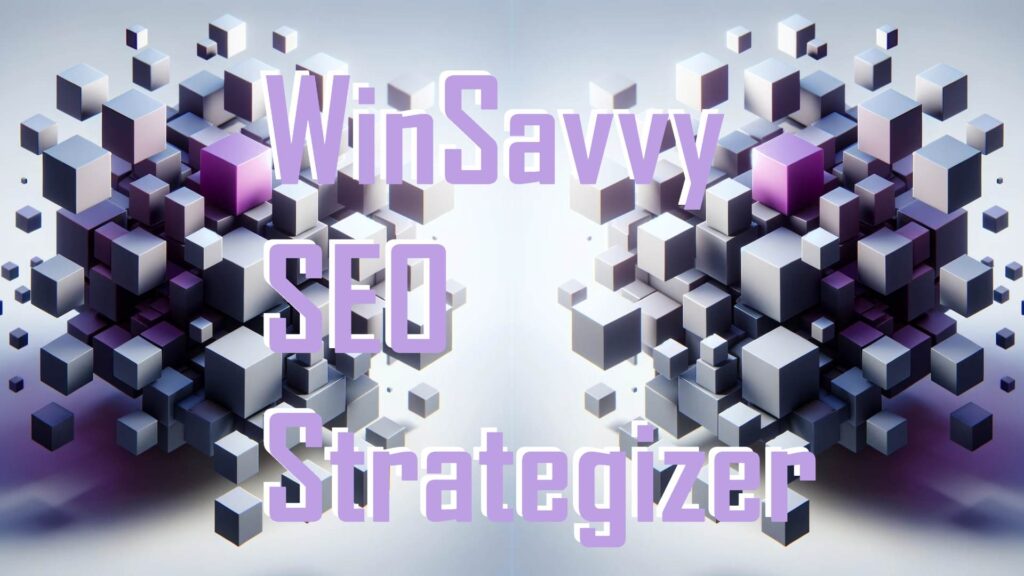In the dynamic world of business where customer preferences and market trends are continually shifting, understanding your customers and building strong relationships with them has never been more critical.
This is where Customer Relationship Management (CRM) systems step in as powerful tools to drive significant improvements in customer retention.
Why Customer Retention is so important in today’s Competitive Business Environment

Imagine this: you run a business, and over time you’ve garnered a healthy number of customers. But retaining these customers — getting them to choose your product or service repeatedly over others — is the real challenge.
It’s a widely recognized fact in the business world that retaining existing customers is less expensive and more profitable than acquiring new ones. In this context, customer retention becomes a vital business strategy.
The question then arises: How can businesses effectively retain customers in today’s fiercely competitive marketplace? This is where CRM systems come into play. CRM, an acronym for Customer Relationship Management, is a technology used to manage a company’s interactions with current and potential customers.
The integration of CRM into a business model isn’t just about technology; it’s a comprehensive approach to an organization’s philosophy in dealing customer interaction.
Effective CRM practices, when utilized strategically, can work wonders in improving customer retention rates, fostering customer loyalty, and boosting the overall profitability of a business.
Understanding the Connection between CRM and Customer Retention
The bond between CRM and customer retention is profound and intertwined. CRM systems enable businesses to understand their customers better, interact with them more effectively, and anticipate their needs proactively.
To fully appreciate the importance of CRM in the context of customer retention, it’s essential to comprehend the underlying connection between these two elements.
CRM as a Relationship Builder
At its core, CRM is a relationship management tool. Businesses use CRM to manage and analyze customer interactions throughout the customer lifecycle, with the ultimate goal of improving business relationships, assisting in customer retention, and driving sales growth.
In essence, CRM systems allow businesses to develop a deeper understanding of their customer base by creating a holistic view of the customer journey. This detailed customer insight enables businesses to anticipate customer needs, tailor their offerings to meet these needs, and provide exceptional customer service – all critical elements in fostering customer loyalty and ensuring retention.
CRM and Customer Loyalty: The Direct Impact
In the competitive business environment of today, customer loyalty is hard-earned and even harder to maintain. However, with the assistance of effective CRM, businesses can develop and implement strategies that can significantly boost customer loyalty.
By consolidating customer data into a single, accessible system, CRM systems allow businesses to deliver personalized service, making customers feel valued and understood.
This personalization fosters a sense of loyalty, as customers are more likely to repeat business with companies that understand their needs and provide tailored solutions.
Repeat Business and the CRM Influence
When businesses succeed in providing personalized and satisfying customer experiences, repeat business is a natural consequence. CRM systems facilitate this process by helping companies understand the customer purchase history and preferences, allowing them to tailor their marketing efforts accordingly.
A CRM system is more than just a tool for organizing customer data; it is also a strategic asset that can help businesses identify upselling or cross-selling opportunities, thus encouraging repeat business.
With a CRM system in place, businesses are equipped to recognize the right moment to offer a new product or service to an existing customer, increasing the likelihood of repeat business.
Moreover, CRM goes beyond simply making a sale. It focuses on creating a positive customer experience that fosters loyalty and drives repeat business. In essence, CRM systems enable businesses to treat every customer as a unique individual, creating a sense of connection and loyalty that directly contributes to customer retention.
Now, you might be thinking, ‘That sounds impressive, but how exactly does a CRM system achieve all this?’ The answer lies in the core components of CRM that are intrinsically designed to boost customer retention. Let’s explore these components in the next section.
Core Components of CRM that Contribute to Customer Retention
Customer Relationship Management (CRM) isn’t a one-dimensional tool—it’s composed of several components that, together, contribute to an integrated and effective strategy for customer retention.
Each component provides unique capabilities and advantages, from contact management to lead management and interaction tracking. Let’s dive into these elements and their relevance to customer retention.
Contact Management
At its core, CRM is designed to help businesses manage their contacts effectively. Whether those contacts are current customers or potential leads, having an organized system to store their details (such as name, contact information, purchase history, and preferences) is essential for personalized and responsive customer service.
Effective contact management contributes to customer retention by ensuring that customer needs are anticipated and addressed promptly.
It facilitates personalized communication, which is a key factor in customer satisfaction and loyalty. The more a business knows about its customers, the better it can meet their needs.
Interaction Tracking
Do you remember the last time you spoke with a customer? What about the last time they made a purchase? If you’re scratching your head trying to remember, you’re not alone. CRM systems offer a solution to this issue by tracking all interactions with customers.
This includes phone calls, emails, purchases, service requests, and more. By having this information at your fingertips, you can provide more personalized service, resulting in higher customer satisfaction and retention.
Knowing when a customer last made a purchase, their preferred communication channel, or any recent complaints or feedback can greatly impact the customer’s relationship with your business. Interaction tracking allows businesses to provide proactive and personalized customer service, leading to higher customer satisfaction and ultimately, better retention rates.
Lead Management
CRM isn’t only about managing existing customers; it also plays a crucial role in nurturing potential customers or leads. Lead management tools within CRM allow businesses to track and manage leads throughout the sales funnel. This process ensures that potential customers don’t fall through the cracks, leading to increased sales and customer base.
An effective lead management process can significantly enhance a business’s ability to convert leads into loyal customers. It provides insights into a lead’s behavior and interaction with the business, enabling the business to nurture the lead effectively by providing personalized and timely responses or solutions. Thus, CRM’s lead management capabilities can directly impact customer retention by converting leads into loyal customers who contribute to repeat business.
Analytics and Reporting

CRM systems provide detailed analytics about customer behavior and business operations. These insights enable businesses to make data-driven decisions to improve customer retention.
A more advanced component of CRM systems, CRM analytics, allows businesses to analyze customer data to gain insights into customer behavior, preferences, and value to the business. These insights can be used to enhance customer experience, personalize customer interactions, and identify potential risks to customer retention.
For example, by identifying customers who have not made a purchase in a while or those who have experienced issues with the product or service, businesses can proactively address these situations and ensure customer satisfaction, thereby improving customer retention.
By now, you should have a good understanding of the connection between CRM and customer retention. The next step is to learn how to leverage CRM for effective customer engagement and retention, which we will explore in the next section.
Leveraging CRM for Effective Customer Engagement and Retention

Successfully retaining customers involves more than just reacting to their needs; it requires proactive engagement. Here’s how you can leverage CRM to enhance customer engagement and foster lasting relationships.
Strategies to Maximize CRM for Customer Engagement
Customer Relationship Management (CRM) tools are powerful assets for businesses, but maximizing their potential requires more than just implementation. It requires strategic planning and execution. Here are some effective strategies to leverage CRM for optimal customer engagement, which is a crucial factor in customer retention.
Enhance Personalization
Customers today expect personalization as a standard of service. In fact, according to Accenture, 91% of consumers are more likely to shop with brands that provide relevant offers and recommendations.
CRM systems, with their ability to gather and analyze customer data, provide an opportunity to meet these expectations.
Businesses can utilize CRM tools to deliver personalized content, from marketing emails to product recommendations. Customizing interactions based on a customer’s past behavior, preferences, and needs can drastically improve customer engagement and, in turn, customer retention.
Multi-Channel Approach
A multi-channel approach is essential in today’s digital age. Customers interact with businesses in numerous ways—through social media, email, websites, phone calls, and more. A CRM system can help businesses manage and optimize these various channels of communication.
A multi-channel approach not only provides customers with a consistent experience across platforms, but it also allows businesses to engage customers where they’re most comfortable.
Leverage CRM Analytics
CRM analytics can provide valuable insights into customer behavior, preferences, and engagement levels. By analyzing these metrics, businesses can identify trends, spot opportunities for improvement, and adjust their strategies accordingly.
For example, if CRM data reveals that customers who receive follow-up emails after a purchase have higher engagement levels, businesses can adopt this practice across all customer segments.
Prioritize Customer Service
Good customer service is key to customer retention. CRM tools can aid in improving customer service by streamlining processes, automating tasks, and providing employees with the information they need to effectively serve customers.
For instance, CRM can automate follow-up emails after a customer interaction or provide service agents with a customer’s full history with the company, enabling them to provide more personalized and efficient service.
Foster Relationship through CRM
CRM is not just about managing customers—it’s about building relationships. By utilizing CRM tools to their full potential, businesses can foster strong relationships with customers that promote loyalty and retention.
This could involve using CRM tools to implement a customer loyalty program, sending customers personalized messages on their birthdays, or using CRM analytics to identify and reward your most loyal customers.
Role of Personalized Customer Experience in Retention, Facilitated by CRM
The modern business world is in the era of customer-centricity where personalized customer experience has become a crucial determinant of customer retention. In this regard, CRM plays an instrumental role by enabling businesses to offer personalized services to customers. The following sections will delve deeper into this topic.
Understanding Personalized Customer Experience
A personalized customer experience refers to the practice of tailoring products, services, and communication to meet the unique needs of individual customers.
As per a study by SmarterHQ, 72% of consumers in 2019 said they only engage with marketing messages that are customized to their specific interests. This indicates that personalization has become more of a necessity than a luxury in customer service.
CRM, with its capabilities to store and analyze vast amounts of customer data, becomes a vital tool for businesses in providing personalized customer experiences.
How CRM Facilitates Personalization
CRM systems allow businesses to collect various types of data about customers, including their purchasing habits, preferences, feedback, and interactions with the business. This data can then be analyzed to derive insights about the customers’ behavior, needs, and expectations. These insights enable businesses to tailor their products, services, and communication to each customer, thereby providing a personalized experience.
For example, a CRM could help a retail business analyze the purchasing history of its customers and send them personalized offers based on their preferences. Similarly, a CRM system can enable a service company to provide personalized service to its customers based on their past interactions and feedback.
The Impact of Personalized Experiences on Customer Retention
Personalization, facilitated by CRM, plays a critical role in enhancing customer satisfaction, which is a key factor in customer retention. Customers today expect businesses to understand their needs and preferences and cater to them individually. By meeting these expectations, businesses can enhance customer satisfaction and build long-lasting relationships, thereby improving customer retention.
For instance, Accenture reports that 91% of consumers are more likely to shop with brands that recognize, remember, and provide relevant offers and recommendations. This underlines the importance of personalization in customer retention.
CRM’s Role in Continuous Improvement of Personalized Experiences
The role of CRM is not just limited to enabling personalization—it also plays a crucial role in the continuous improvement of personalized customer experiences. CRM systems can track the outcomes of personalized services and communication, enabling businesses to continuously monitor, measure, and improve their personalization efforts.
For example, if a personalized marketing campaign does not yield the expected results, the business can use the CRM data to identify the gaps and improve the campaign.
Case Studies
Now that we have a solid understanding of how CRM systems can be used to improve customer retention, let’s delve into some real-world examples.
We will analyze how prominent companies such as Amazon, HP, and Slack Technologies Inc. have successfully utilized CRM tools to boost their customer retention rates.
Please note that we have compared all the CRM tools that these businesses have used, to find the one that’s perfectly suitable for your needs.
Salesforce CRM in Amazon
Overview of Salesforce CRM and Its Features Relevant to Customer Retention
Salesforce is a comprehensive CRM system that provides businesses with tools for sales, customer service, marketing automation, analytics, application development, and more. Its features that contribute to customer retention include:
- Customer 360: This feature provides a holistic view of each customer, helping businesses understand their customers’ needs, preferences, and buying behaviors.
- Einstein Analytics: Salesforce’s AI-powered analytics tool, Einstein, offers predictive insights that can help businesses anticipate customer needs and engage with them more effectively.
Related Reads:
- How to choose a marketing automation software
- Best marketing automation software for e-commerce businesses
Detailed Case Study on How Amazon Has Used Salesforce for Customer Retention
Amazon, one of the world’s largest online retailers, utilizes Salesforce’s CRM to offer personalized shopping experiences to its millions of customers. It does this in several ways:
- Personalized Recommendations: By analyzing purchasing history and browsing patterns, Amazon offers product recommendations that are tailored to each customer’s interests, boosting sales and customer loyalty.
- Effective Customer Service: Amazon uses Salesforce Service Cloud to manage customer queries and complaints, ensuring quick resolution of issues and thereby boosting customer satisfaction.
- Predictive Analysis: Using Einstein Analytics, Amazon predicts customer needs and preferences, enabling the company to deliver the right product or service at the right time.
Key Takeaways and Lessons Learned
Amazon’s successful use of Salesforce CRM for customer retention provides valuable lessons for other businesses:
- CRM systems are not just for managing customer data; they can be used to create personalized customer experiences that drive loyalty.
- Quick and effective customer service is crucial for customer retention.
- Predictive analytics can provide invaluable insights for crafting customer retention strategies.
Microsoft Dynamics 365 in HP Inc.
Overview of Microsoft Dynamics 365 and Its Features Relevant to Customer Retention
Microsoft Dynamics 365 is a suite of enterprise resource planning and customer relationship management applications. It offers tools for sales, customer service, field service, human resources, finance, and operations. Its customer retention relevant features include:
- Unified Customer View: Dynamics 365 provides a 360-degree view of the customer, collecting data from various touchpoints, and presenting it in a comprehensible format. This assists in understanding customer behavior and tailoring services accordingly.
- Predictive Insights: By leveraging Microsoft’s AI capabilities, Dynamics 365 can predict customer behavior, enabling businesses to proactively address customer needs and strengthen loyalty.
Detailed Case Study on How HP Inc. Used Dynamics 365 to Retain Customers
HP Inc., a leader in the technology industry, relies on Microsoft Dynamics 365 for its CRM needs. Here’s how they have leveraged the platform to enhance customer retention:
- Personalized Marketing Campaigns: HP utilizes the extensive customer data collected and managed by Dynamics 365 to develop highly targeted marketing campaigns. This personalization results in better engagement, increasing customer loyalty.
- Proactive Customer Service: Using predictive insights from Dynamics 365, HP anticipates issues before they arise, thereby enhancing customer satisfaction.
- Optimized Sales Process: Dynamics 365’s sales solutions have helped HP streamline their sales process, ensuring that customers get a seamless purchasing experience, thus boosting repeat business.
Key Takeaways and Lessons Learned
HP Inc.’s effective use of Microsoft Dynamics 365 offers several insights:
- Personalized marketing campaigns can significantly improve customer engagement and retention.
- Proactive customer service can greatly enhance customer satisfaction and loyalty.
- Streamlining the sales process can provide a seamless customer experience, encouraging repeat business.
Zoho CRM in Slack Technologies Inc. (Case Study)
Overview of Zoho CRM and Its Features Relevant to Customer Retention
Zoho CRM is a robust customer relationship management platform that offers a wide range of features, from sales force automation to customer support and service, marketing automation, and analytics, making it a versatile tool for businesses of all sizes. Some of its customer retention-oriented features include:
- Segmentation: Zoho CRM allows businesses to segment their customers based on various parameters such as purchase history, preferences, and behaviors. This helps businesses to offer customized experiences to their customers.
- Customer Journey Mapping: With Zoho CRM, businesses can map the entire customer journey, right from the first interaction. This helps in understanding the touchpoints that matter most to customers and enhancing those experiences.
- Predictive Sales: Zoho CRM uses AI-driven analytics to predict future sales trends based on historical data, helping businesses to make data-driven decisions.
Detailed Case Study on How Slack Technologies Inc. Used Zoho CRM for Customer Retention
Slack, a popular business communication platform, turned to Zoho CRM to improve its customer retention. Here’s how they employed the platform:
- Tailored Communication: Slack used Zoho’s segmentation features to categorize their customers and tailor communication accordingly. This resulted in more relevant interactions, enhancing customer satisfaction and loyalty.
- Improved Customer Support: With Zoho CRM’s customer support features, Slack was able to respond to customer queries faster, thus improving customer experience and fostering loyalty.
- Informed Decisions: Using Zoho’s predictive sales and analytics, Slack was able to anticipate customer needs and tailor their product updates and improvements, keeping their customers satisfied and retained.
Key Takeaways and Lessons Learned
Slack’s implementation of Zoho CRM for customer retention offers the following takeaways:
- Tailored communication can significantly improve customer engagement and retention.
- Quick and effective customer support is key to keeping customers satisfied and loyal.
- Making informed, data-driven decisions can help meet customer needs more accurately, thereby boosting retention.
CRM’s Role in Predictive Analysis for Customer Retention
In today’s data-driven business landscape, predictive analysis stands as an integral tool that allows businesses to forecast future trends and make informed decisions. But what role does CRM play in predictive analysis and how does it aid in customer retention? Let’s find out.
The Importance of Predictive Analysis in CRM
Predictive analysis, at its core, utilizes statistical algorithms and machine learning techniques to identify the likelihood of future outcomes based on historical data. In the context of CRM, this means using the plethora of data collected about customers to forecast their future actions, needs, and preferences.
Predictive analysis has emerged as a powerful tool in the field of customer relationship management (CRM).
With its ability to anticipate future customer behaviors based on historical data, predictive analysis can greatly enhance the effectiveness of CRM and, in turn, customer retention strategies. Let’s explore this topic further in the following sub-sections.
Understanding Predictive Analysis in the Context of CRM
Predictive analysis involves using statistical algorithms and machine learning techniques to identify future outcomes based on historical and current data.
In the context of CRM, predictive analysis can analyze customer data and behavior to forecast future customer actions, trends, and potential risks.
This predictive capability can be invaluable for businesses, allowing them to anticipate customer needs, preferences, and possible churn before they occur. This level of foresight enables businesses to be proactive rather than reactive, enhancing the effectiveness of their customer retention strategies.
Anticipating Customer Needs and Preferences
One of the key ways predictive analysis improves CRM is by enabling businesses to anticipate customer needs and preferences. By analyzing past purchasing behavior, product usage, and other relevant data, predictive analysis can identify patterns and trends that can predict future customer behavior.
For example, by analyzing past purchasing behavior, a company can predict which products a customer is likely to purchase in the future.
This can inform targeted marketing efforts, personalized recommendations, and even product development, all of which can improve customer satisfaction and retention.
Identifying Potential Customer Churn
Another critical aspect of predictive analysis in CRM is the ability to identify customers who are at risk of churn. Churn prediction models analyze various customer behaviors such as purchase frequency, response to marketing campaigns, service usage patterns, and more, to identify signs of potential churn.
Recognizing these signs early allows businesses to take proactive measures to address the issues causing customer dissatisfaction. This could involve reaching out to the customer with special offers, resolving service issues, or other strategies aimed at improving customer satisfaction and loyalty.
Enhancing Customer Segmentation
Predictive analysis can also enhance customer segmentation by predicting customer behaviors and grouping customers with similar predicted behaviors. This allows businesses to target their marketing and retention efforts more effectively.
For example, predictive models can identify customers who are likely to respond positively to a certain marketing campaign, ensuring efforts are directed towards these customers, ultimately increasing campaign effectiveness and return on investment.
Predictive Analysis in Action: A Real-World Example
To illustrate the power of predictive analysis in CRM, consider the example of telecommunications giant AT&T. They used predictive analysis to reduce churn rates significantly by predicting which customers were most likely to leave and taking proactive measures to retain them.
This predictive insight is particularly vital for businesses in today’s competitive marketplace, where understanding customer behavior can be the difference between retention and churn.
With predictive analysis in CRM, businesses can anticipate customer needs before they arise, tailor their offerings to individual customer preferences, and effectively engage with customers at the right time through the right channel.
How Predictive Analysis Helps in Retaining Customers
The application of predictive analysis in CRM is a game-changer in customer retention strategies. By analyzing past behaviors and drawing correlations, predictive models provide invaluable insights into future customer actions, enabling companies to better cater to their needs and, ultimately, keep them loyal. Below, we delve deeper into how predictive analysis helps in retaining customers.
Customer Behavior Forecasting
Predictive analysis applies sophisticated algorithms to past customer data, allowing businesses to anticipate future buying behaviors, needs, and preferences. Companies can then personalize their offerings, deliver timely services, and communicate more effectively, significantly enhancing the customer experience and increasing the likelihood of retaining customers.
Consider Amazon, the eCommerce giant, renowned for its personalized recommendations. By employing predictive analysis, they can suggest products based on a customer’s browsing and purchasing history, significantly enhancing the user experience and, subsequently, increasing customer retention rates.
Churn Prediction
Predictive analysis plays a crucial role in identifying potential customer churn before it occurs. By recognizing specific behavior patterns or changes, businesses can determine which customers are most likely to leave and why.
Once a potential churn risk is identified, companies can take proactive steps, like reaching out to the customer with personalized incentives, addressing issues that led to dissatisfaction, or even altering broader business practices. These preemptive measures can significantly improve customer retention rates.
As an example, many telecom companies now use predictive analysis to identify churn signals, such as decreased usage or increased complaints. Armed with this information, they can then intervene early to retain those customers.
Segmentation and Targeting
Predictive analysis can also improve customer segmentation. By grouping customers based on similar behaviors or characteristics, businesses can tailor their marketing and service strategies to each segment, ensuring more relevance and effectiveness.
A well-segmented customer base allows for personalized communication and marketing, which improves customer satisfaction and, in turn, customer retention. Take Netflix, for instance. By using predictive analysis for segmentation, Netflix can recommend shows and movies to its users based on their viewing history, creating a personalized and satisfying user experience that boosts customer retention.
Upselling and Cross-Selling
Predictive analysis can identify customers who are likely to respond positively to upselling or cross-selling opportunities, making these strategies more effective. By offering relevant additional products or services, businesses can increase customer satisfaction, which is key to customer retention.
A prime example is the insurance sector. Using predictive analysis, insurers can identify policyholders who might be interested in additional coverage or policies and then tailor their upselling or cross-selling strategies accordingly.
By leveraging the power of predictive analysis in CRM, businesses can significantly improve their customer retention rates. However, the implementation of CRM is not without challenges. Up next, we’ll discuss the common obstacles businesses face in implementing CRM for customer retention and how to overcome them.
Overcoming Challenges in Implementing CRM for Customer Retention

While the benefits of CRM for customer retention are undeniable, the path to effective implementation can be fraught with challenges. Let’s identify these common obstacles and discuss some practical solutions and best practices.
Identifying Common Obstacles in CRM Implementation
- Data Quality and Integrity: Successful CRM implementation relies heavily on the quality of the data inputted. Incomplete, inaccurate, or outdated customer data can severely undermine CRM’s effectiveness in boosting customer retention.
- Integration with Existing Systems: Integrating CRM systems with other business applications (such as ERP or marketing automation tools) can be a complex process. Poor integration can lead to data silos, compromising the quality and usefulness of the data.
- User Adoption: Resistance from employees, due to a lack of understanding or fear of change, can also pose a significant challenge. Without proper training and buy-in from users, the CRM system will not be utilized to its full potential.
- Maintaining Customer Privacy: With the increasing importance placed on data privacy and security, companies need to ensure that their CRM practices align with privacy regulations to avoid damaging customer trust and facing potential legal repercussions.
Solutions and Best Practices for Overcoming These Challenges
- Implement Data Governance: Establish clear policies and procedures for data management to ensure data quality and integrity. Regular data audits and cleansing activities can also help maintain the accuracy and relevancy of CRM data.
- Plan for Integration: During the CRM selection process, consider how well the platform can integrate with existing systems. Choose a CRM that supports API integrations, and consider seeking help from professionals for complex integrations.
- Promote User Adoption: Invest in user training and support to promote CRM adoption among employees. Highlighting the benefits of the CRM system and how it can make their work easier can also help encourage its usage.
- Prioritize Privacy and Security: Ensure your CRM practices comply with data privacy laws. Implement robust security measures, educate employees about data privacy, and be transparent with customers about how their data is being used.
In overcoming these challenges, businesses can fully harness the power of CRM for customer retention. Yet, as with all technology, the field of CRM is constantly evolving. Let’s look at the future trends in CRM and customer retention and how businesses can stay ahead of the curve.
Future Trends in CRM and Customer Retention
The world of CRM is dynamic, continually evolving to adapt to technological advancements and changes in customer behavior. As we look ahead, several emerging trends are set to redefine how CRM systems contribute to customer retention strategies.
The Rise of AI in CRM

Artificial intelligence (AI) is no longer just a futuristic concept; it’s a present-day reality transforming the CRM landscape.
AI-powered CRM systems can analyze vast amounts of customer data in real-time, providing businesses with actionable insights for more personalized customer engagement strategies. From predictive analytics forecasting customer behaviors to chatbots enhancing customer service, AI in CRM will continue to be a game-changer for customer retention.
AI Enhances Customer Data Analysis
One of the primary benefits of AI is its ability to handle large volumes of data efficiently. When applied to CRM, AI can sift through millions of data points to identify patterns and trends that may otherwise go unnoticed.
This enhanced analysis can help businesses better understand their customers’ behavior, enabling them to implement more effective retention strategies.
For instance, Salesforce’s Einstein AI platform can predict customer behaviors, recommend best actions, and even automate tasks, all of which help improve the efficiency and effectiveness of customer retention efforts.
AI Facilitates Personalization
Personalization is a key aspect of customer retention. AI takes personalization to a new level by delivering tailored experiences based on individual customer data. It does this by analyzing past behaviors, interactions, and preferences to predict what each customer will want or need in the future.
Netflix is a prime example of personalization driven by AI. Their recommendation engine uses machine learning algorithms to analyze viewing patterns and suggest content that each user would enjoy, resulting in highly personalized experiences and increased customer retention.
AI Improves Customer Service
AI’s impact is also felt in the realm of customer service. Chatbots and virtual assistants, powered by AI, can handle a wide range of customer interactions, from answering queries to resolving complaints. Their ability to provide quick, accurate, and round-the-clock service enhances the customer experience and, consequently, customer retention.
Take IBM’s Watson, for example. It’s an AI platform that powers virtual assistants in various sectors. Watson can understand, learn, and interact like a human, providing customers with instant, valuable, and personalized assistance.
AI Predicts and Reduces Customer Churn
AI can predict customer churn by analyzing various factors such as purchase history, customer complaints, and engagement levels. Once potential churners are identified, businesses can take proactive steps to retain them.
For example, using Google’s AI and machine learning technologies, Google Cloud’s Predictive Analytics can help businesses predict which customers are likely to churn, allowing them to take preventive measures and improve retention rates.
AI Streamlines CRM Processes
AI also automates many routine CRM tasks, freeing up time for businesses to focus on strategic aspects of customer retention. AI can automate data entry, appointment scheduling, follow-up reminders, and even sales forecasts, making CRM processes more efficient.
For example, Zoho CRM’s Zia, an AI-driven sales assistant, can automate various CRM tasks, perform advanced analytics, provide predictive sales insights, and even forecast future trends, all of which support more effective customer retention strategies.
Emphasis on Customer Experience Management (CXM)
As businesses understand that exceptional customer experiences foster loyalty, there’s a growing shift from CRM to Customer Experience Management (CXM).
This approach focuses on managing and improving all interactions with customers throughout their journey. Future CRM systems will be integral to CXM, providing insights to create personalized experiences that strengthen customer relationships and drive retention.
Understanding the Role of CXM in CRM
CXM is a holistic approach that focuses on creating personalized interactions based on a deep understanding of the customer’s journey. CRM systems that incorporate CXM tools and strategies can capture, analyze, and leverage customer data more effectively. This deeper understanding helps businesses to deliver more personalized and impactful experiences, leading to improved customer satisfaction and increased retention.
The Power of Personalization
Personalization is at the heart of CXM. Today’s customers expect businesses to analyze their digital footprint and understand their individual needs and preferences. CRM tools, powered by advanced technologies like AI, can analyze customer data in real-time, allowing businesses to tailor their offerings and interactions to each customer’s unique needs and preferences.
For example, Adobe’s Experience Cloud is a comprehensive CXM solution that enables businesses to leverage data and AI for personalized marketing, sales, and customer service.
This level of personalization can significantly enhance customer satisfaction, encouraging repeat business and boosting retention rates.
Integrating Omnichannel Interactions
In the digital age, customers interact with businesses across multiple channels – social media, email, websites, physical stores, and more. An effective CXM strategy takes these omnichannel interactions into account, ensuring a seamless and consistent experience across all touchpoints.
A CRM system with CXM capabilities can integrate data from all these channels, providing a single view of each customer. This can help businesses to understand their customers’ behaviors and preferences better, leading to more effective customer engagement and retention strategies.
For instance, SAP’s C/4HANA suite offers a comprehensive CRM and CXM solution that integrates data from various channels to provide a consistent and personalized customer experience.
Real-Time Responsiveness
In today’s fast-paced world, customers expect businesses to respond to their needs and concerns in real-time. CRM systems with CXM capabilities can automate real-time responses, using AI-powered chatbots or predictive analytics to address customer queries or issues immediately. This level of responsiveness can significantly enhance customer satisfaction, leading to increased loyalty and retention.
Omnichannel Integration
The future of CRM lies in seamless integration across all customer touchpoints. An omnichannel CRM system will provide a unified customer view, regardless of the channel through which the customer interacts with the business. This holistic approach will allow for consistent, personalized engagement across all channels, enhancing customer satisfaction and retention.
The Omnichannel Advantage
In an age where customers are using a myriad of platforms and devices, businesses cannot afford to be confined to a single channel. An effective CRM strategy encompasses all possible touchpoints, including websites, social media, email, call centers, and physical stores.
Omnichannel integration is about creating a unified customer experience across these channels. It involves gathering and analyzing data from each touchpoint to gain a comprehensive understanding of a customer’s journey. This knowledge allows businesses to provide personalized and consistent service, thereby increasing customer satisfaction and retention.
How CRM Facilitates Omnichannel Integration
Advanced CRM systems have capabilities to integrate data from various channels into a single, cohesive platform. These systems collect and analyze customer interactions from all channels, providing a 360-degree view of the customer journey.
For example, Salesforce’s Service Cloud allows businesses to manage all customer interactions, regardless of the channel, within a single platform. This enables businesses to understand customers’ preferences and behaviors better and cater to their needs more effectively.
Enhancing Customer Experience with Omnichannel CRM
Providing a seamless customer experience is a crucial aspect of customer retention. Customers expect consistency across channels; they want their interactions with a business to be effortless, whether they’re engaging with the business online, on social media, or in a physical store.
CRM systems that support omnichannel integration can help ensure this consistency. By maintaining a unified customer profile that updates in real-time, these CRM systems can deliver personalized and relevant experiences to each customer across all touchpoints.
The Role of Artificial Intelligence
Artificial intelligence (AI) plays a vital role in omnichannel integration within CRM systems. AI can analyze customer data from various channels to provide insights into customer behavior and preferences. These insights can then be used to personalize customer experiences across channels, thus improving customer satisfaction and retention.
Moreover, AI can automate certain processes, such as customer service through chatbots or predictive product recommendations, thereby enhancing the customer experience and further boosting retention rates.
Real-Time Data Analysis

In the digital era, customer preferences and behaviors change rapidly. The future CRM system will facilitate real-time data analysis, enabling businesses to react promptly to these changes. Immediate access to up-to-date customer data will allow for on-the-spot decision-making, which is crucial for maintaining relevance and ensuring customer loyalty.
The Significance of Real-Time Data Analysis
The value of real-time data analysis lies in its immediacy. Instead of relying on historical data and patterns, real-time analysis allows businesses to make decisions based on what is happening at the moment. This capability can make all the difference in today’s fast-paced, highly competitive business environment where customer preferences can change in a flash.
Real-time data analysis equips businesses with the agility and responsiveness needed to meet customer needs and address issues instantly, thereby improving the overall customer experience and loyalty. For instance, if a customer expresses dissatisfaction with a product or service on a social media platform, real-time analysis can alert businesses to this issue promptly, enabling them to respond and resolve the issue quickly, thus potentially turning a negative experience into a positive one.
How CRM Supports Real-Time Data Analysis
Modern CRM systems are designed to capture and analyze customer data from various channels in real time. They have features that monitor customer interactions, track transactions, and even analyze sentiment in customer communications. These systems can provide businesses with real-time insights into customer behavior and satisfaction levels.
For instance, Salesforce’s Einstein Analytics is an AI-powered analytics tool that provides real-time insights and recommendations. Similarly, Microsoft Dynamics 365 offers real-time customer insights that enable businesses to track customer behavior and respond to customer needs immediately.
Real-Time Data Analysis for Personalized Experiences
One of the key benefits of real-time data analysis in CRM is its ability to facilitate personalized customer experiences.
By analyzing customer behavior and interactions in real time, CRM systems can provide businesses with the insights they need to deliver highly personalized service, offers, and recommendations.
These personalized experiences can significantly improve customer satisfaction and loyalty. According to a study by Epsilon, 80% of consumers are more likely to do business with a company that offers personalized experiences.
Therefore, by leveraging real-time data analysis, businesses can enhance customer retention.
Real-Time Data Analysis and Predictive Analytics
Real-time data analysis is not only about understanding the present; it’s also about predicting the future. With real-time analysis, businesses can identify trends and patterns as they emerge, enabling them to forecast future behavior.
Predictive analytics powered by AI and machine learning can help businesses predict customer needs and preferences, allowing them to be proactive in their customer retention strategies. This proactive approach can significantly improve customer satisfaction and retention rates.
As these trends take hold, businesses will need to stay abreast of the changing CRM landscape to leverage these advancements in their customer retention strategies.
With the proper utilization of CRM, businesses can not only retain customers but also transform them into brand advocates.
Wrapping it up
Customer Relationship Management (CRM) has emerged as a linchpin in businesses’ customer retention strategies, providing an invaluable platform for fostering and nurturing long-term customer relationships.
From maintaining a complete, organized record of customer information through contact management, tracking all customer interactions, to managing leads effectively, CRM plays an instrumental role in multiple facets of customer retention.
In the ever-competitive business landscape, CRM’s role in customer retention is more critical than ever. Businesses that can leverage CRM effectively stand to gain a significant advantage, turning one-time customers into loyal patrons and driving long-term success.
In closing, CRM is not just a business tool; it’s a strategic asset that, when utilized well, can be a key differentiator in enhancing customer retention. And remember, a retained customer is not just continued business, but a potential advocate for your brand.
We hope this comprehensive guide gives you the insight you need to use CRM effectively for improving customer retention. Armed with this knowledge, you’re well-equipped to build enduring customer relationships that will stand the test of time.
Read Next:
- 21+ Ways Chatbots can Skyrocket Lead Generation and Conversions
- How to Create a Sales Funnel: A Practical Guide
- How to use Surveys and Feedback for CRO
- How to Use Heatmaps and Click Tracking for CRO
- Why and How to Incorporate Webinars into Your Marketing Strategy
- 29+ Digital Analytics Software to Skyrocket Your Digital ROI
- 17+ Top Webinar Software Platforms: What’s the Best?





















Comments are closed.